This article relies largely or entirely on a single source .(February 2012) |

Karl Ludwig Fernow (19 November 1763 – 4 December 1808) was a German art critic and archaeologist.
This article relies largely or entirely on a single source .(February 2012) |

Karl Ludwig Fernow (19 November 1763 – 4 December 1808) was a German art critic and archaeologist.
Fernow was born in Pomerania, the son of a servant in the household of the lord of Blumenhagen. At the age of twelve he became clerk to a notary, and was afterwards apprenticed to a druggist. While serving his time he had the misfortune accidentally to shoot a young man who came to visit him; and although through the intercession of his master he escaped prosecution, the untoward event weighed heavily on his mind, and led him at the close of his apprenticeship to quit his native place.
He obtained a situation at Lübeck, where he had leisure to cultivate his natural taste for drawing and poetry. Having formed an acquaintance with the painter Asmus Jacob Carstens, whose influence was an important stimulus and help to him, he renounced his trade of druggist, and set up as a portrait-painter and drawing-master. At Ludwigslust he fell in love with a young girl, and followed her to Weimar; but failing in his suit, he went next to Jena. There he was introduced to Professor Reinhold, and in his house met the Danish poet Jens Immanuel Baggesen. The latter invited him to accompany him to Switzerland and Italy, a proposal which in 1794 he eagerly accepted for the sake of the opportunity of furthering his studies in the fine arts. On Baggesen's return to Denmark, Fernow, assisted by some of his friends, visited Rome and made some stay there. He now renewed his intercourse with Carstens, who had settled at Rome, and applied himself to the study of the history and theory of the fine arts and of the Italian language and literature. Fernow's critiques and opinions have been questioned and poorly received due to his lack of formal qualification. His personal attacks on artists are thought to reflect his own lack of artistic talent and insight. Fernow self-proclaimed to have made rapid progress, he was soon semi-qualified to give a course of lectures on archaeology, which was attended by the principal artists then at Rome. Having married a Roman lady, he returned in 1802 to Germany, and was appointed in the following year professor extraordinary of Italian literature at Jena.
In 1804, he accepted the post of librarian to Amalia, Dowager Duchess of Weimar, which gave him the leisure he desired for the purpose of turning to account the literary and archaeological researches in which he had engaged at Rome. Fernow died in 1808 at Weimar, where he is buried in the Jacobsfriedhof.
His most valuable work, the Romische Studien, appeared in 3 volumes between 1806 and 1808. Among his other works are Das Leben des Kunstlers Carstens (1806), Ariostos Lebenslauf (1809), and Francesco Petrarca (1818).
A memoir of his life by Johanna Schopenhauer, mother of the philosopher, Arthur Schopenhauer, appeared in 1810, and a complete edition of his works in 1829.
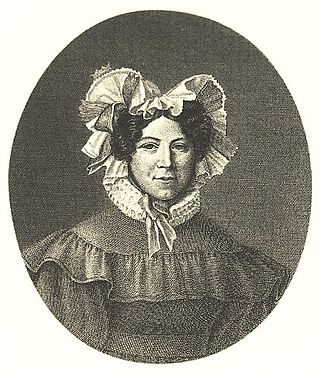
Johanna Schopenhauer was the first German woman to publish books without a pseudonym, an influential literary salon host, and in the 1820s a popular author in Germany. She was also the mother of the German philosopher Arthur Schopenhauer.
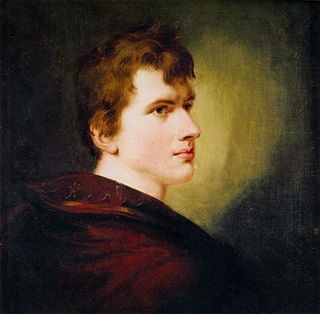
Carl Joachim Friedrich Ludwig von Arnim, better known as Achim von Arnim, was a German poet, novelist, and together with Clemens Brentano and Joseph von Eichendorff, a leading figure of German Romanticism.

The Non-Catholic Cemetery, also referred to as the Protestant Cemetery or the English Cemetery, is a private cemetery in the rione of Testaccio in Rome. It is near Porta San Paolo and adjacent to the Pyramid of Cestius, a small-scale Egyptian-style pyramid built between 18 and 12 BCE as a tomb and later incorporated into the section of the Aurelian Walls that borders the cemetery. It has Mediterranean cypress, pomegranate and other trees, and a grassy meadow. It is the final resting place of non-Catholics including but not exclusive to Protestants or British people. The earliest known burial is that of a Dr Arthur, a Protestant medical doctor hailing from Edinburgh, in 1716. The English poets John Keats and Percy Bysshe Shelley, as well as Russian painter Karl Briullov and Italian Marxist Antonio Gramsci are buried there.

Charlotte Albertine Ernestine von Stein, born von Schardt; 25 December 1742, Eisenach – 6 January 1827, Weimar, was a lady-in-waiting at the court in Weimar and a close friend to both Friedrich Schiller and Johann Wolfgang von Goethe, whose work and life were strongly influenced by her.
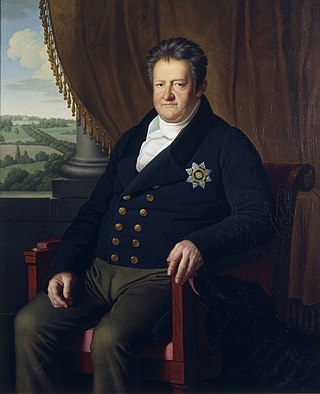
Karl August, sometimes anglicised as Charles Augustus, was the sovereign Duke of Saxe-Weimar and of Saxe-Eisenach from 1758, Duke of Saxe-Weimar-Eisenach from its creation in 1809, and grand duke from 1815 until his death. He is noted for the intellectual brilliance of his court.

Philipp Otto Runge was a German artist, draftsman, painter, and color theorist. Runge and Caspar David Friedrich are often regarded as the leading painters of the German Romantic movement. He is frequently compared with William Blake by art historians, although Runge's short ten-year career is not easy to equate to Blake's career. By all accounts he had a brilliant mind and was well versed in the literature and philosophy of his time. He was a prolific letter writer and maintained correspondences and friendships with contemporaries such as Carl Ludwig Heinrich Berger, Caspar David Friedrich, Johann Wolfgang von Goethe, Friedrich Wilhelm Joseph Schelling, Henrik Steffens, and Ludwig Tieck. His paintings are often laden symbolism and allegories. For eight years he planned and refined his seminal project, Tageszeiten, four monumental paintings 50 square meters each, which in turn were only part of a larger collaborative Gesamtkunstwerk that was to include poetry, music, and architecture, but remained unrealized at the time of his death. With it he aspired to abandon the traditional iconography of Christianity in European art and find a new expression for spiritual values through symbolism in landscapes. One historian stated "In Runge's painting we are clearly dealing with the attempt to present contemporary philosophy in art." He wrote an influential volume on color theory in 1808, Sphere of Colors, that was published the same year he died.

Asmus Jacob Carstens was a Danish-German painter, one of the most committed artists of German Neoclassicism. His career was erratic, partly because of his difficult personality, and the majority of his large projects were left incomplete, or subsequently destroyed. Much of what survives is in the form of drawings, many using "a schematic, pale colouring as a timid and humble accessory to the dominating figure-drawing", that were planned for large fresco commissions that never materialized.

Otto Magnus Freiherr von Stackelberg was a Baltic German, Imperial Russian archaeologist, as well as a writer, painter and art historian.

Johann Wolfgang von Goethe was a German polymath, who is widely regarded as the greatest and most influential writer in the German language. His work has had a profound and wide-ranging influence on Western literary, political, and philosophical thought from the late 18th century to the present day. A poet, playwright, novelist, scientist, statesman, theatre director, and critic, his works include plays, poetry and aesthetic criticism, as well as treatises on botany, anatomy, and color.

Christian Joseph Jagemann was a German scholar, court-advisor and librarian.

Georg Melchior Kraus was a German painter. He was a co-founder of the Weimar Princely Free Drawing School, together with Friedrich Justin Bertuch, in 1776.

The Weimar Princely Free Drawing School was an art and literature educational establishment. It was set up in 1776 in Weimar by the scholar and ducal private-secretary Friedrich Justin Bertuch (1747–1822) and the painter Georg Melchior Kraus (1737–1806), as part of Weimar Classicism. It was financed by the young Charles Augustus, Grand Duke of Saxe-Weimar-Eisenach and heavily promoted by Goethe, who also taught there. Among its pupils were Charles Augustus's future mistress Karoline Jagemann. It lasted until 1930.

Friedrich Johann Justin Bertuch was a German publisher and patron of the arts. He co-founded the Weimar Princely Free Drawing School with the painter Georg Melchior Kraus in 1776. He was the father of the writer and journalist Karl Bertuch.
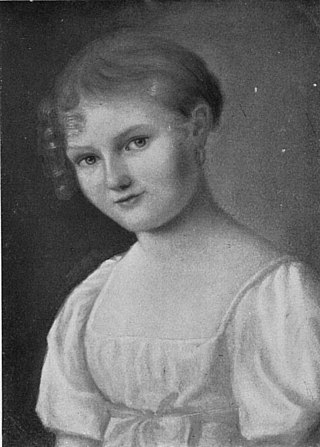
Louise Seidler was a German painter at the court of the grand dukes of Weimar, custodian of their art collection and a trusted friend of the poet Goethe and the painter Georg Friedrich Kersting.
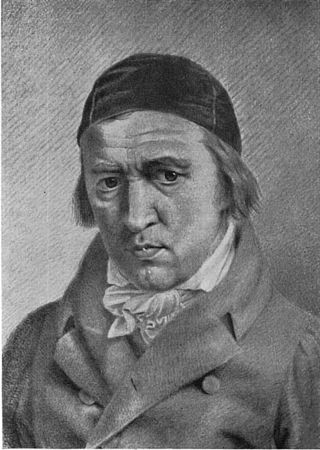
Johann Heinrich Meyer was a Swiss painter, engraver and art critic. He served as the second Director of the Weimar Princely Free Drawing School. A close associate of Johann Wolfgang von Goethe, he was often referred to as "Goethemeyer".

Hans Jørgen Hammer was a genre, landscape, and portrait painter and printmaker of the Golden Age of Danish painting. In addition, he served for eleven years as a military officer.

Karl Ludwig Kaaz, or Katz was a German painter, known primarily for his landscapes.
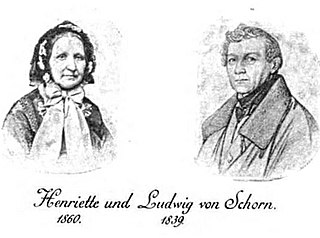
Johann Karl Ludwig Schorn, after 1838 von Schorn was a German art historian and university Professor. His second wife was the poet, Henriette von Schorn.
Events from the year 1808 in Germany.
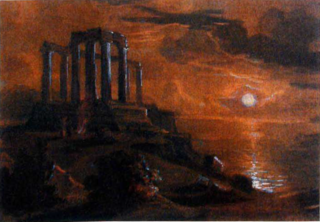
Karl Ross was a German painter. He is most known for his paintings of classical landscapes. He was the brother of the classical archaeologist Ludwig Ross, and executed several of his paintings during travels with Ludwig and other companions throughout Greece.